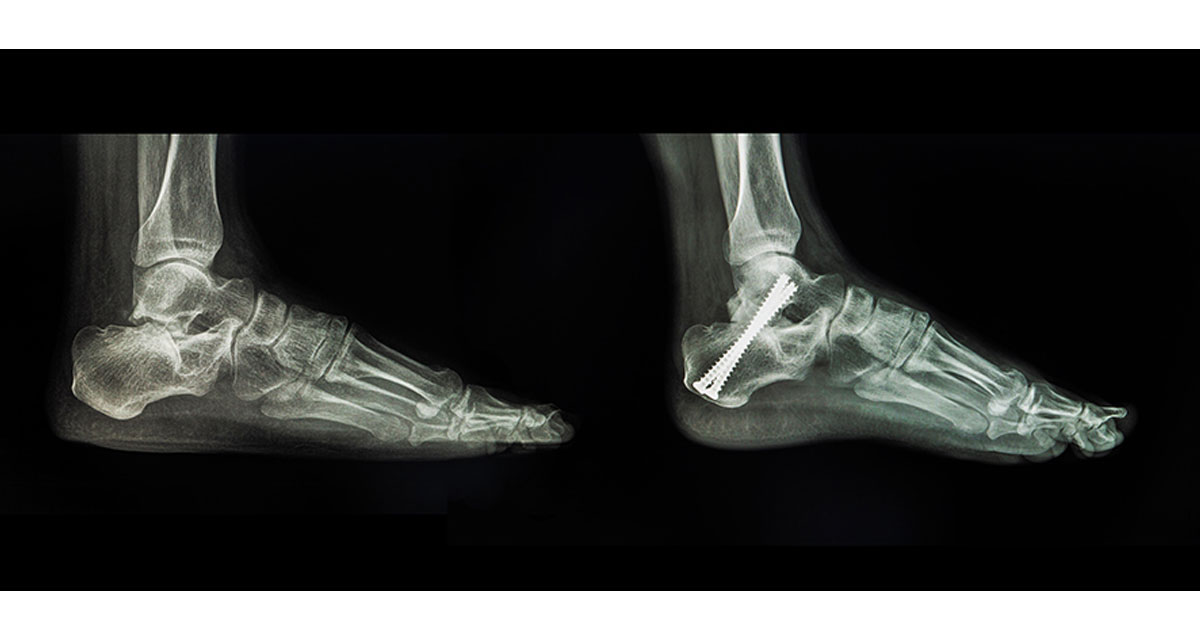The term arthrodiatasis was first coined in 1979 in Verona, Italy. It comes from Greek, meaning “joint-through-to stretch out”, in a few words articulated distraction of the joint. It is a technique exclusively referring to external fixation, which was developed initially for the conservative treatment of the osteoarthritis of the hip, and later successfully used to cure other conditions.
Arthrodiatasis, or articulated joint distraction, is a procedure related exclusively to external fixation. It permits off-loading of body and muscle forces, and distraction of a joint space with an external frame, while preserving or restoring joint movement in one plane by adding a hinge. The aim is recovering synovial circulation and promoting improvement of articular cartilage. Positive outcomes have been observed performing arthrodiatasis of the hip by using Orthofix external fixation.(1) Either the ProCallus fixator or the LRS may be used together with specific clamps/hinges that allow hip movement and distraction. Bone screws are inserted in the pelvis and in the femur.
In the foot and ankle, arthrodiatasis is recommended in the presence of post traumatic arthritis of the ankle joint, after the failure of conservative treatment, or with younger, more active patients experiencing pain, instability and deformity, but seeking as an alternative technique to ankle arthrodesis and replacement.(2) Standard weight bearing radiographs of the foot and ankle provide sufficient preoperative imaging for most distraction procedures. When needed, additional procedures may be performed to create a stable, plantigrade foot, which is mandatory for a positive outcome after ankle distraction.
In the knee, this technique is performed to correct joint contracture: the Orthofix Circular Fixation Systems can be used with the hinges placed slightly anterior to the centre of rotation of the knee, and a posterior motor after 3-5mm of joint distraction to achieve the aimed correction.
In the ankle, arthrodiatasis may also be performed to correct equinovarus and cavo-varus deformities. A sort of pushing system is applied between the tibia and hindfoot, and the hindfoot and forefoot to distract the joints and obtain partial correction. In the presence of serious tibial plafond fractures this technique may be performed(3), by using a monolateral external fixator, e.g. the XCaliber Ankle Fixator, in which the distraction of the joint space is achieved with the compression-distraction unit.
This technique has also been used in the upper limb, for the treatment of joint stiffness in the elbow, the wrist and the hand’s joints.(4) In the elbow, an external fixator is applied to lengthen the shortened ligaments and fibrotic capsule, and to disimpact humero-ulnar and humero-radial joint surfaces before the mobilization. Even in the presence of soft tissue contracture arthrodiatasis may prove extremely valuable, to overcome a problem that is often of primary importance.
References
- Aldegheri R, Trivella G et al. 1994. Articulated distraction of the hip. Clin Orthop; 301:94-101
- Rodriguez E, Hutchinson B et al. 2012. Arthrodiatasis in the Treatment of Ankle Arthritis: a Case Series. The Foot and Ankle Online Journal; 5(7):2.
- Marsh JL 2000. Distal and Plafond Fractures, in: De Bastiani G, Apley AG and Goldberg AAJ (eds). Orthofix External Fixation in Trauma and Orthopaedics. London: Springer.
- Pennig D 2000. Joint Stiffness in the Upper Limb, in: De Bastiani G, Apley AG and Goldberg AAJ (eds). Orthofix External Fixation in Trauma and Orthopaedics. London: Springer.

